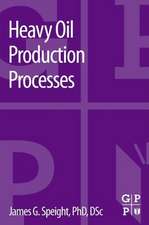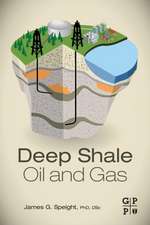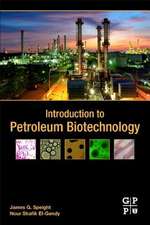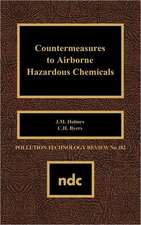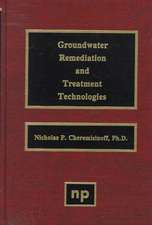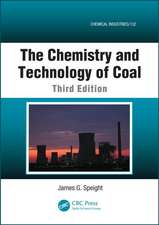Reaction Mechanisms in Environmental Engineering: Analysis and Prediction
Autor James G. Speighten Limba Engleză Paperback – 16 aug 2018
Kinetic principles are used to calculate or estimate the pollutants' half-lives, while physical-chemical properties of organic pollutants are used to estimate transformation mechanisms and rates. The book emphasizes how to develop an understanding of how physico-chemical and structural properties relate to transformations of organic pollutants.
- Offers a one-stop source for analyzing and predicting the speed of organic and inorganic reaction mechanisms for air, water and soil
- Provides the tools and methods for increased accuracy in analyzing and predicting the speed of pollutant conversion in engineered systems
- Uses kinetic principles and the physical-chemical properties of organic pollutants to estimate transformation mechanisms and rates
Preț: 558.46 lei
Preț vechi: 613.69 lei
-9% Nou
Puncte Express: 838
Preț estimativ în valută:
106.87€ • 110.41$ • 88.90£
106.87€ • 110.41$ • 88.90£
Carte tipărită la comandă
Livrare economică 12-26 martie
Preluare comenzi: 021 569.72.76
Specificații
ISBN-13: 9780128044223
ISBN-10: 0128044225
Pagini: 456
Dimensiuni: 152 x 229 mm
Greutate: 0.61 kg
Editura: ELSEVIER SCIENCE
ISBN-10: 0128044225
Pagini: 456
Dimensiuni: 152 x 229 mm
Greutate: 0.61 kg
Editura: ELSEVIER SCIENCE
Public țintă
Environmental, Civil Engineers, Chemical Engineers, Process Engineers, and Material Engineers and ResearchersCuprins
Part 1: Introduction1. Introduction2. Environmental Organic Chemicals
Part 2: Partitioning and Sorption Processes3. Molecular Interactions, Partitioning, and Thermodynamics4. Vapor Pressure5. Aqueous Solubility and Activity Coefficients6. Air Water and Air Organic Solvent Partitioning7. Organic Water Partitioning8. Organic Acids and Bases
Part 1: Sorption and Transformation Processes9. Sorption Processes10. Thermodynamic and Kinetics of Transformation Reactions11. Hydrolysis and Nucleophilic Substitution Reactions12. Redox Transformations13. Photochemical and Photocatalytic Transformations14. Biological Transformations
Part 2: Partitioning and Sorption Processes3. Molecular Interactions, Partitioning, and Thermodynamics4. Vapor Pressure5. Aqueous Solubility and Activity Coefficients6. Air Water and Air Organic Solvent Partitioning7. Organic Water Partitioning8. Organic Acids and Bases
Part 1: Sorption and Transformation Processes9. Sorption Processes10. Thermodynamic and Kinetics of Transformation Reactions11. Hydrolysis and Nucleophilic Substitution Reactions12. Redox Transformations13. Photochemical and Photocatalytic Transformations14. Biological Transformations

